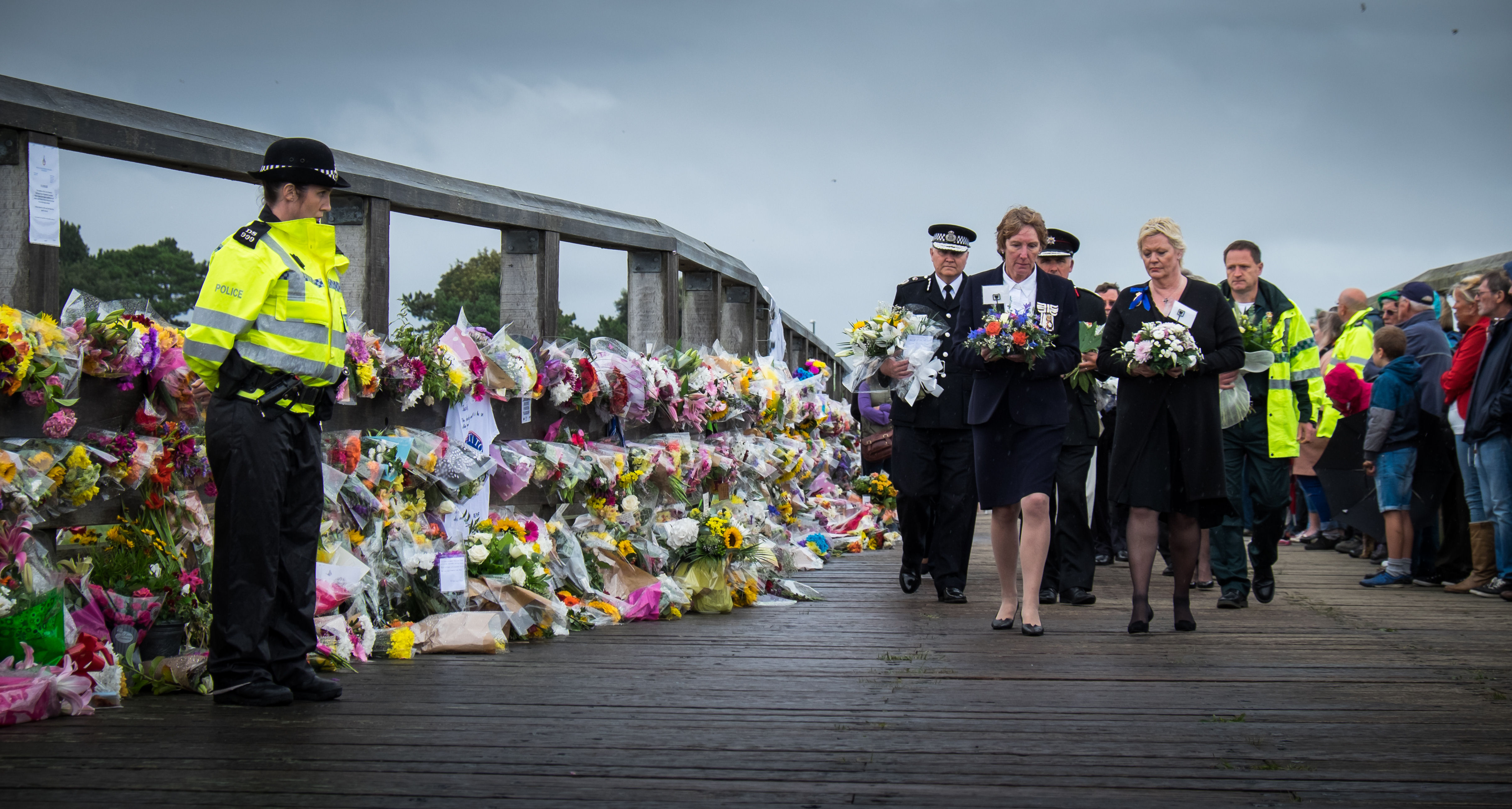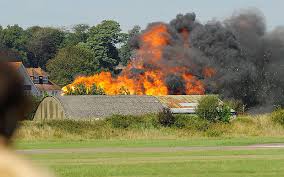The Crown Prosecution Service Said that it would not make a decision this month on whether to bring criminal charges against Andy Hill, the pilot of the Hawker Hunter which crashed at the Shoreham air show.

The CPS informed the West Sussex coroner Penelope Schofield, who has postponed the next pre-inquest review into the 11 deaths in August 2015 as a result.
The pre-inquest review has been rescheduled for Monday 26 March and the families have been informed of the new date.
Ms Schofield described the decision to postpone as regrettable but said that, with no decision from the CPS, little progress could be made.
She indicated that she was still working towards holding the full inquest in the autumn if no criminal charges are brought. The inquest may have to be suspended if the CPS decides to bring criminal charges.
A 17-month investigation by the Air Accidents Investigation Branch found that Mr Hill was flying the 1955 Hawker Hunter plane too slowly and too low during a loop the loop which ended with the jet plunging on to the A27.
It also found that the organisers had failed to take adequate measures to mitigate the effects of a crash outside the air show boundary. The air show has not been held since.
The AAIB made a total of 32 safety recommendations for the Civil Aviation Authority, including 10 in the final report, published in March 2016.
The 11 who died in the air crash were
Maurice Abrahams, 76, of Brighton
Dylan Archer, 42, of Brighton
Tony Brightwell, 53, of Hove
Matt Grimstone, 23, of Brighton
Matt Jones, 24, of Littlehampton
Graham Mallinson, 72, of Newick
Daniele Polito, 23, of Goring
Mark Reeves, 53, of Seaford
Jacob Schilt, 23, of Brighton
Richard Smith, 26, of Hove
Mark Trussler, 54, of Worthing










From what I’ve read, the AAIB report is inconclusive on any type of incapacitation of the pilot (eg fainted or blacked out etc) which potentially could have played a part in the accident. With the reports of this as a possible cause in the media, and just based on common sense of it being a possible cause, it’s somewhat remiss for the AAIB to not have commented on incapacitation as a possible cause in their full report, even if a momentary black out , in light of the fact it’s been reported too that the pilot lost memory of the incident being in a coma himself, and thus might not have remembered if he did black out or not. The pilots experience is such that as gate height of the loop wasn’t reached (the safe height to reach to then complete the pull out from the loop), it’s reasonable to expect him to have simply undertaken a rolling manoeuvre at the top of the loop, to roll out of the loop and fly away. The fact he didn’t points, for me, to possibly some form of in capacitation. If he did complete the manoeuvre concious and has reported this and being concious then it’s clear there are concerns about the role he played, but the fact incapacitation isn’t mentioned in the report either way, leads me to concern about the full recommendations of the report to place blame at the hands of the pilot for pulling out of a loop with gate height not reached, when no such comments on incapacitation either way is made. Id have concerns that from the AAIB report and not mentioning his state of consciousness either way, that unfair blame is being levelled on the pilot to exonerate the state for any part they played eg airshow over land and display authorisations etc. In addition we know that Sussex police were aware of the congregating crowds at the junction where the crash happened, signs were in place warning people not to stand there, as detailed and photographed in AAIB report, that the police didn’t have authority to send people on there way from the junction as alluded to in AAIB report, but that similarly no requests were made by police to ask people to move voluntarily in a position of spectators standing on the display line and in line with the directions of the runway at the time, where it’s possible planes would be overflying the area on the downwind or upwind direction, and that if a crash was to happen on the display line it’s very reasonable to make sure people were not present there. This is just common sense, and anyone who knows the airfield, knows planes overfly that junction on landing. Indeed I’ve landed an aircraft myself and you overfly that junction.
The left altimeter was known to stick so why did pilot not set the right altimeter to the local QNH 1013 but left it at 1016.5 which would have shown the plane almost a 100ft higher than it was
Richard
The accident report is clear. Equate this to a case of causing death by dangerous driving, speeding or the wrong side of the road . If the pilot was grossly negligent and we start from the premise that he considered himself competent to carry out the manoeuvre then it is a matter for a jury to decide whether he was or was not grossly negligent on the criminal burden. There should be no further delay. If the defence is ‘I cannot remember or there may have been fumes in the cockpit, then so be it.
Obviously there will be the natural human desire to avenge the loss of a loved one, but was the pilot really to blame?
Perhaps he blacked out as Simon suggests (above) or it could have been the result of mechanical failure.
One of the on-line videos I saw after the event seemed to show what I believe is referred to as a “flame out”, where the fire inside the engine literally blows out through the exhaust, resulting in a total loss of thrust unless and until the engine can be restarted.
(You’ll realise from the above that I’m no expert.)
By all means prosecute the pilot if he really was to blame, but the facts need to be considered very carefully.
After all, nobody in his right mind would deliberately crash a jet aircraft onto a busy main road.